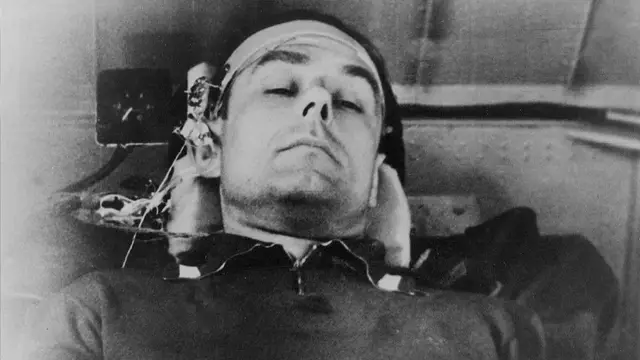A cosmonaut used his final transmission to issue haunting final words as he fell from space to his death.
In April 1967, Soyuz 1 began its first crewed spaceflight, with Vladimir Mikhaylovich Komarov being the one to lead the mission.
However, disaster struck when the spaceflight, which was part of the Soviet space program as Russia and the US went head-to-head in the space race, crashed into an open field at around 7 a.m.
Komarov then became known as the ‘man who fell from space’. It has been 58 years since the crash; however, many key details of the events leading up to it are hazy.
In 2011, Komarov’s death was covered in the controversial book Starman: The Truth Behind the Legend of Yuri Gagarin, but critics have long questioned the book, believing that it contains many ‘errors’.
What we do know thanks to verified reports by NASA, is that Komarov made numerous orbits around the Earth in his spacecraft and that his issues began after re-entering the Earth’s atmosphere following the completion of his mission.
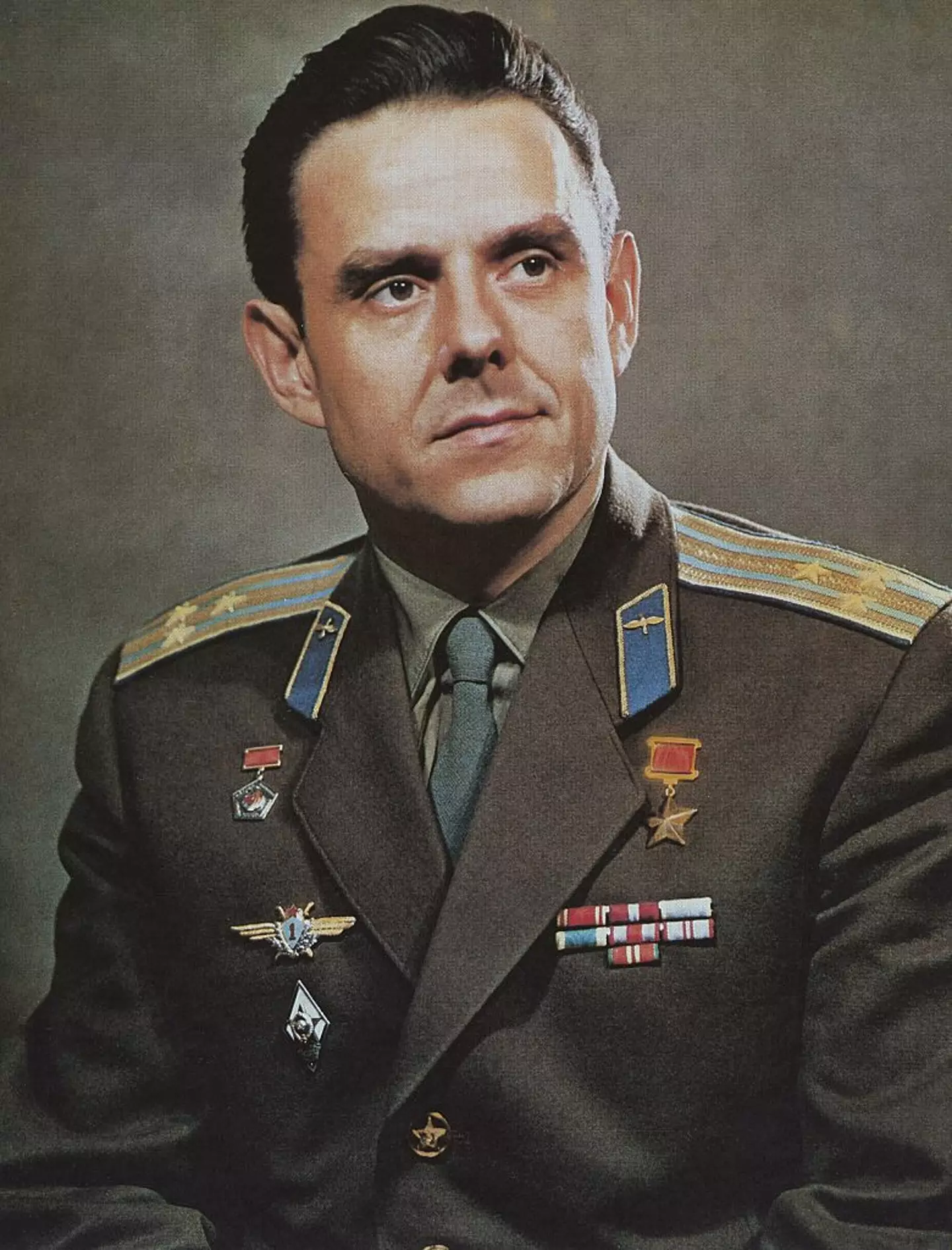

Vladimir Mikhaylovich Komaro died in 1967 (rps/ullstein bild via Getty Images)
It was on April 23, 1967, when Komarov’s space mission occurred, with him being about to orbit the Earth 16 times within 24 hours.
However, one of the two solar panels that supplied energy for the manoeuvre failed to deploy, meaning Komarov was unable to complete the end goal of the mission.
Little did he know that this would become a space disaster that put back the Soviet lunar program 18 months, as per NASA.
Komarov was manning Soyuz 1, which was supposed to dock with Soyuz 2 and then transfer crews the following day, however, issues would arrive which would see Soyuz 1 having to be brought back to Earth.
Not only did one of the solar panels failed to deploy and was wrapped around the service module, he could not manoeuvre the spacecraft because of ‘interference of the reaction control system exhaust with the ion flow sensors’.
These sensors were one of the main methods of orientation, which led to the decision being made to bring Komarov back to Earth, and while re-entry was fine…his landing was not.
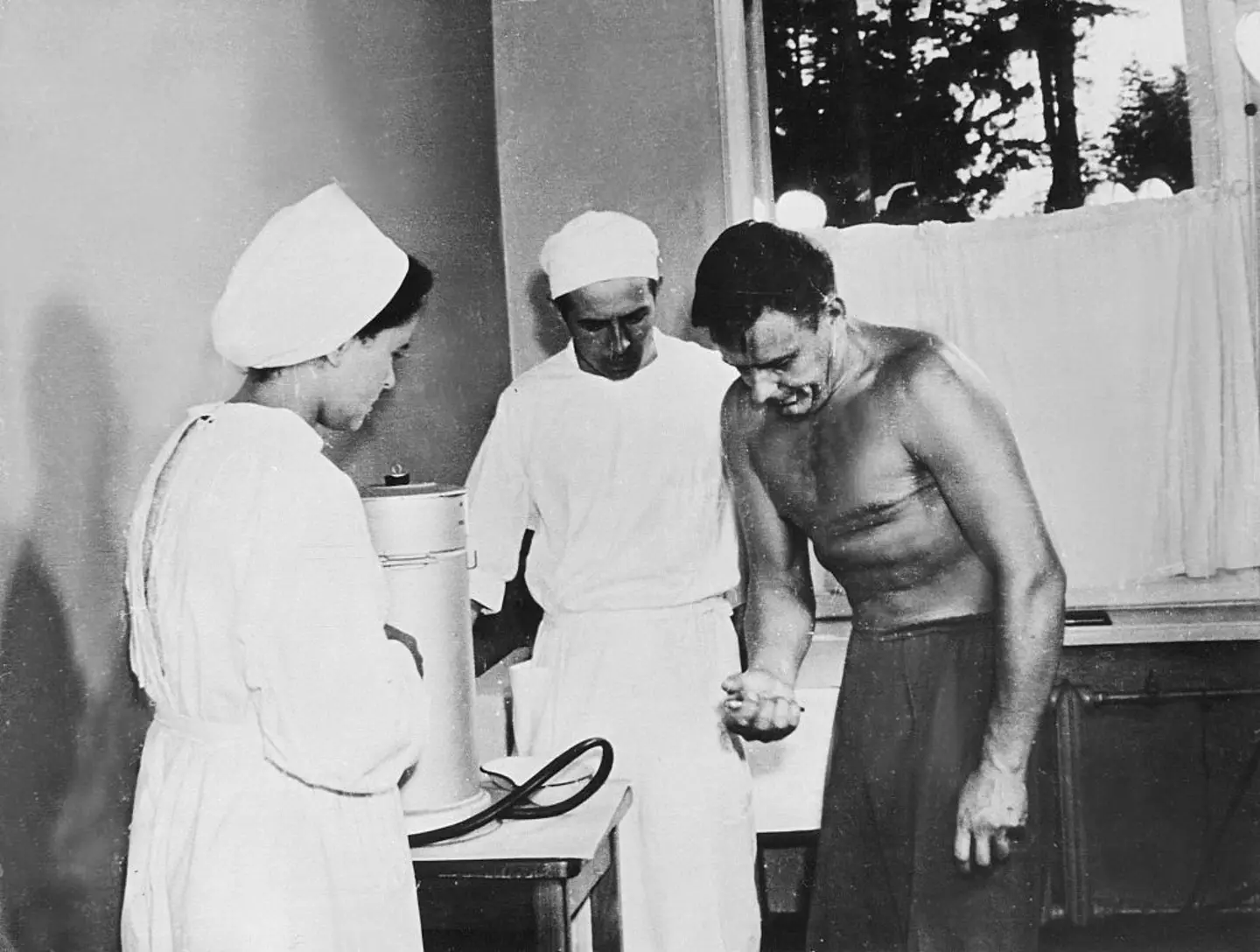

His spacecraft failed after his re-entry (ullstein bild/ullstein bild via Getty Images)
When he reached an altitude of 23,000 feet, Komarov’s parachute that was meant to deploy, but when he deployed his drag chute to slow his decent down, a failure of a pressure sensor meant that the main parachute did not deploy, and the reserve chute became tangled with the drag chute.
Out of options, Komarov had no choice but to wait for his quick death as he hurdled down to Earth.
With no way to stop his fast crash to Earth, the cosmonaut plummeted to the ground and was killed in an explosion on 24 April, 1967.
Tragically, Komarov knew he was about to die as his final words were overheard by the US listening posts in Turkey. He was clearly enraged talking to Alexei Kosygin, then a high ranking official of the Soviet Union, as his aircraft came crashing down.
His charred remains resembled a ‘lump’ and only his heelbone was recognisable, according to reports.
The audio is from that truly terrifying moment, as Starman claims he also said: “This devil ship! Nothing I lay my hands on works properly.”
However, experts are skeptical of this, while reading the official transcript of Komarov’s final moments from the Russian State Archive, one of the last things he told colleagues was: “I feel excellent, everything’s in order.”
Just a few moments later, he reportedly said: “Thank you for transmitting all of that. [Separation] occurred.”
Featured Image Credit: ullstein bild/ullstein bild via Getty Images
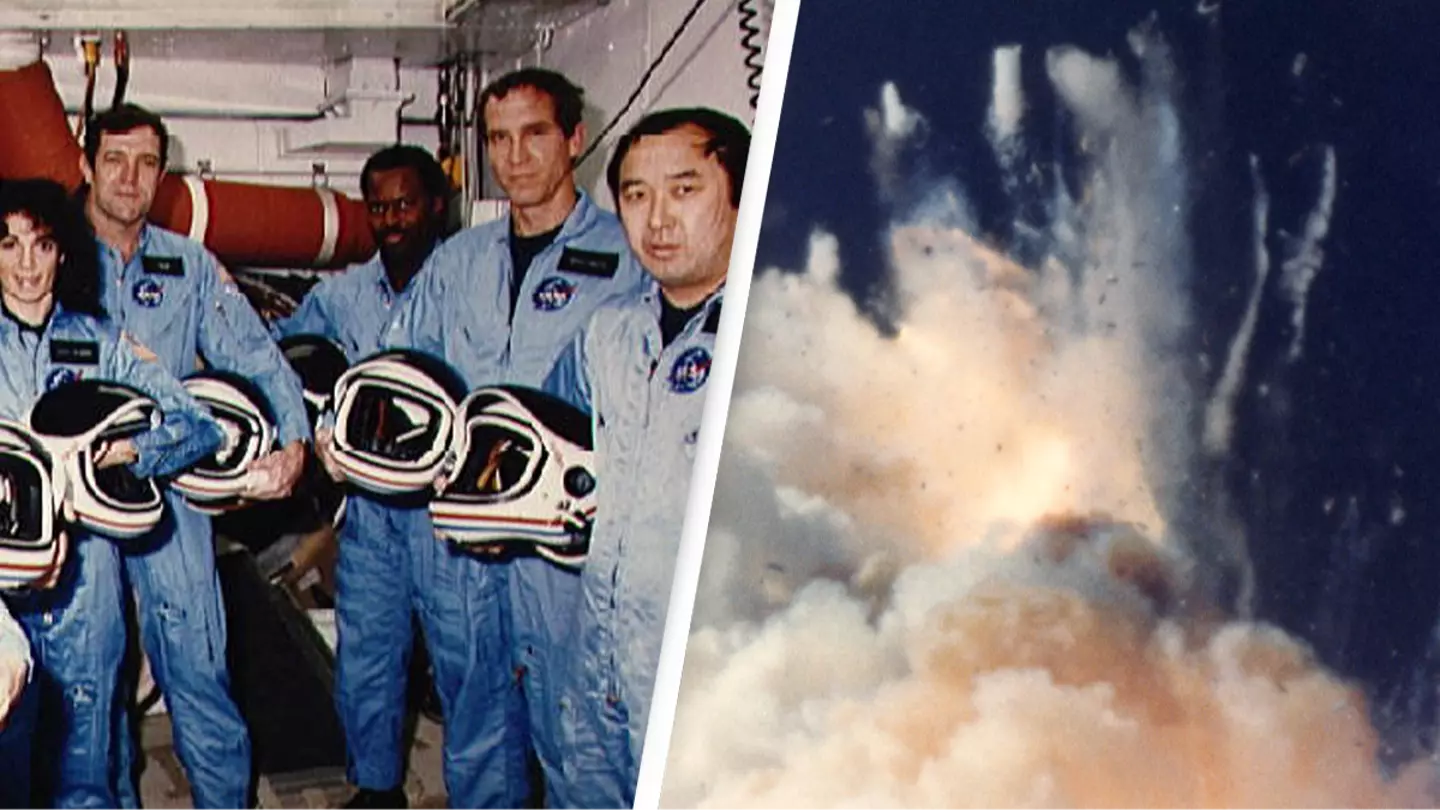

The Challenger rocket mission promised so much, but its story haunts many to this day.
Back in 1986, NASA deployed Challenger on its 10th mission, with the goal of launching the second Tracking and Data Relay Satellite (TDRS-B).
But less than two minutes into the flight, the Challenger exploded, shocking the NASA officials who had a front row seat of the tragedy.
Francis R. Scobee, Michael J. Smith, Ronald E. McNair, Ellison S. Onizuka, Judith A. Resnik, Gregory B. Jarvis and teacher S. Christa McAuliffe were the ones onboard the mission.
All seven of them were tragically killed as the spaceship disintegrated at 46,000 feet above the Atlantic Ocean.


The tragedy happened in 1986 (NASA/AFP via Getty Images)
The story of the Challenger is often regarded as one of the worst NASA accidents of all time – but what exactly caused it?
Well, the rocket is said to have exploded because of a mechanical fault, specifically the failure of two rubber O-rings to seal a joint between the two lower segments of the right-hand solid rocket booster.
A path for a hot exhaust was able to escape from inside the booster during the shuttle’s ascent due to severely cold temperatures.
This subsequently led to flames emerging from the hole which spread to a tank carrying liquid hydrogen and liquid oxygen which then exploded.
Of course, NASA is the pioneer in space technology and has been so for a very long time at this point.
However, many criticised the space agency for trying hard too quick, especially with the little money it had back then in the 80s.
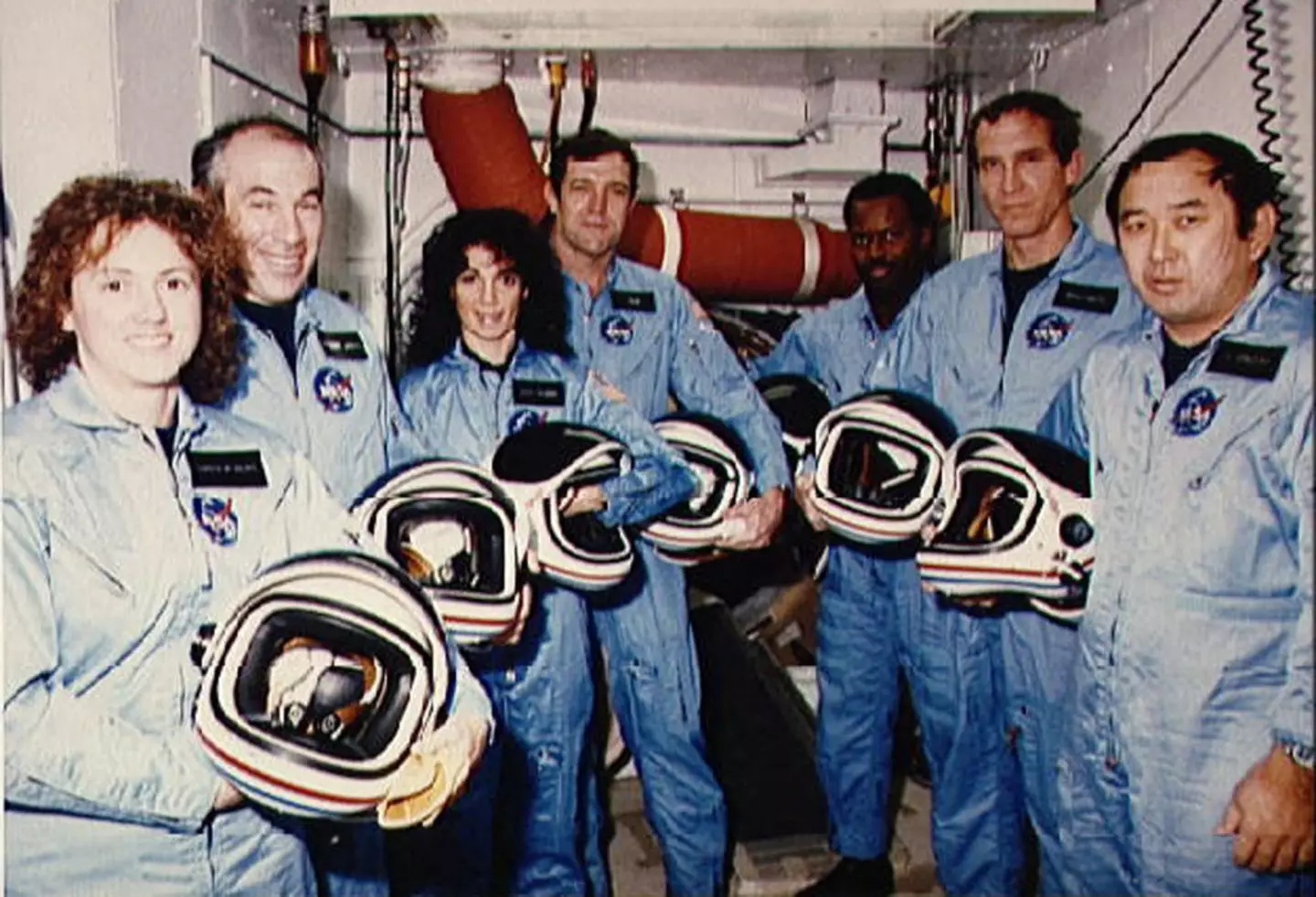

All the crew were killed (NASA/AFP via Getty Images)
While there has been much speculation over the years, it doesn’t provide much comfort to the families of those who lost their lives.
The final panic-stricken words from those inside of the shuttle was captured by the operational recorder which NASA later shared.
Just minutes before the Challenger proceeded on its mission to space, the crew could be heard laughing and completing their routine checks.
One person could be heard saying: “Go you mother.”
As they got up into the air, another person could be heard commenting: “Feel that mother go.”
Just seconds after that though was when tragedy struck.
Based off the video, the crew only seemed to realize it was all over at the last second, as one person could be heard saying ‘uh oh’.
The shuttle containing the crew remained intact and careened into the ocean.
While it is not known for sure, experts believe that due to the rapid pressure change and the crew not wearing pressure suits, it’s likely that they died before the impact of hitting the water due to lack of oxygen.
Featured Image Credit: -/NASA/AFP via Getty Images
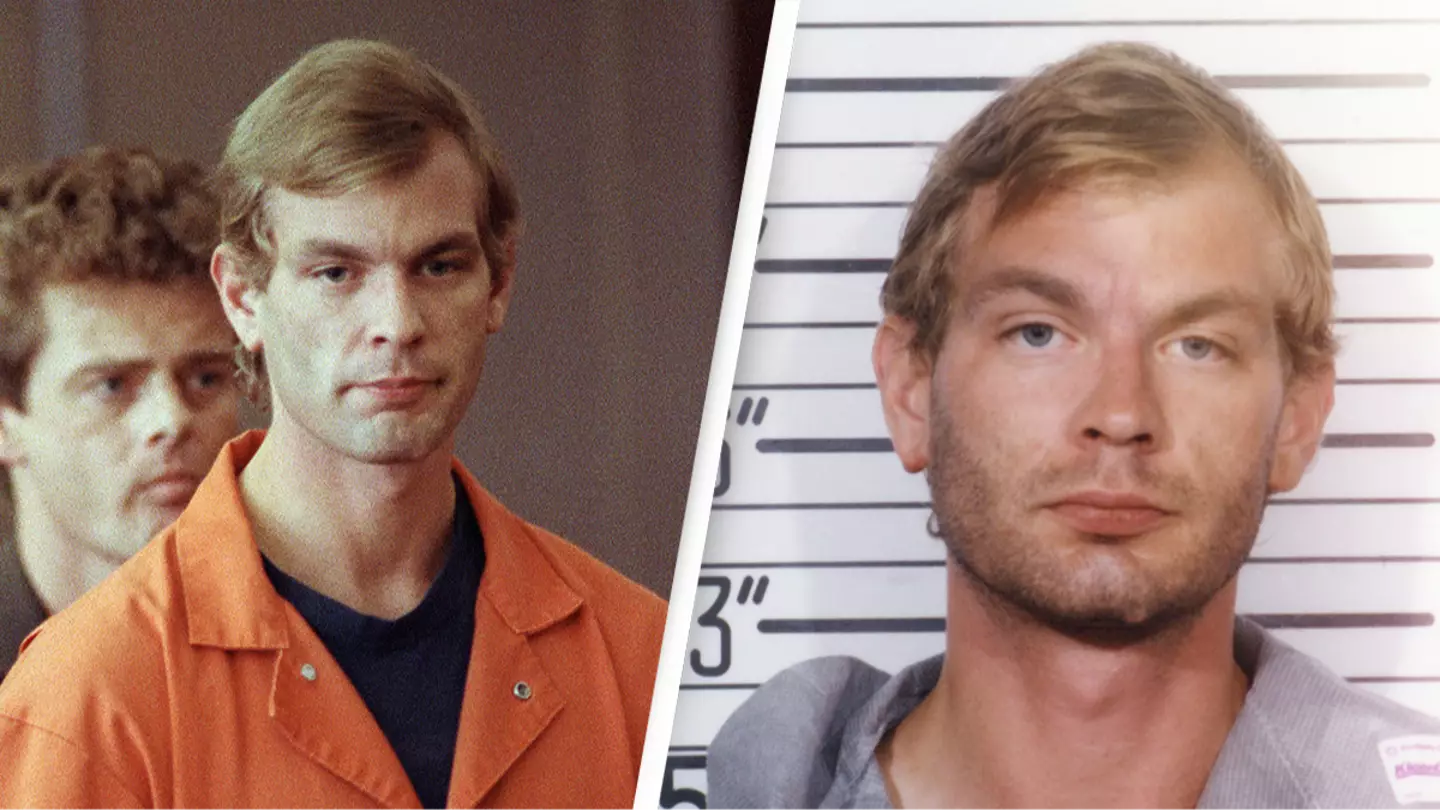

Infamous serial killer Jeffrey Dahmer ended up being brutally beaten to death by a fellow inmate – and his final words were pretty haunting.
Dahmer, who also known as the ‘Milwaukee Cannibal’, murdered at least 17 men and boys from 1978 to 1991.
He would drug and sexually assault his victims before killing them. Dahmer also admitted to cannibalising some of their body parts.
The serial killer was eventually convicted in 1992, having been sentenced to 16 terms of life imprisonment, and would later go on to meet his brutal end while in prison.
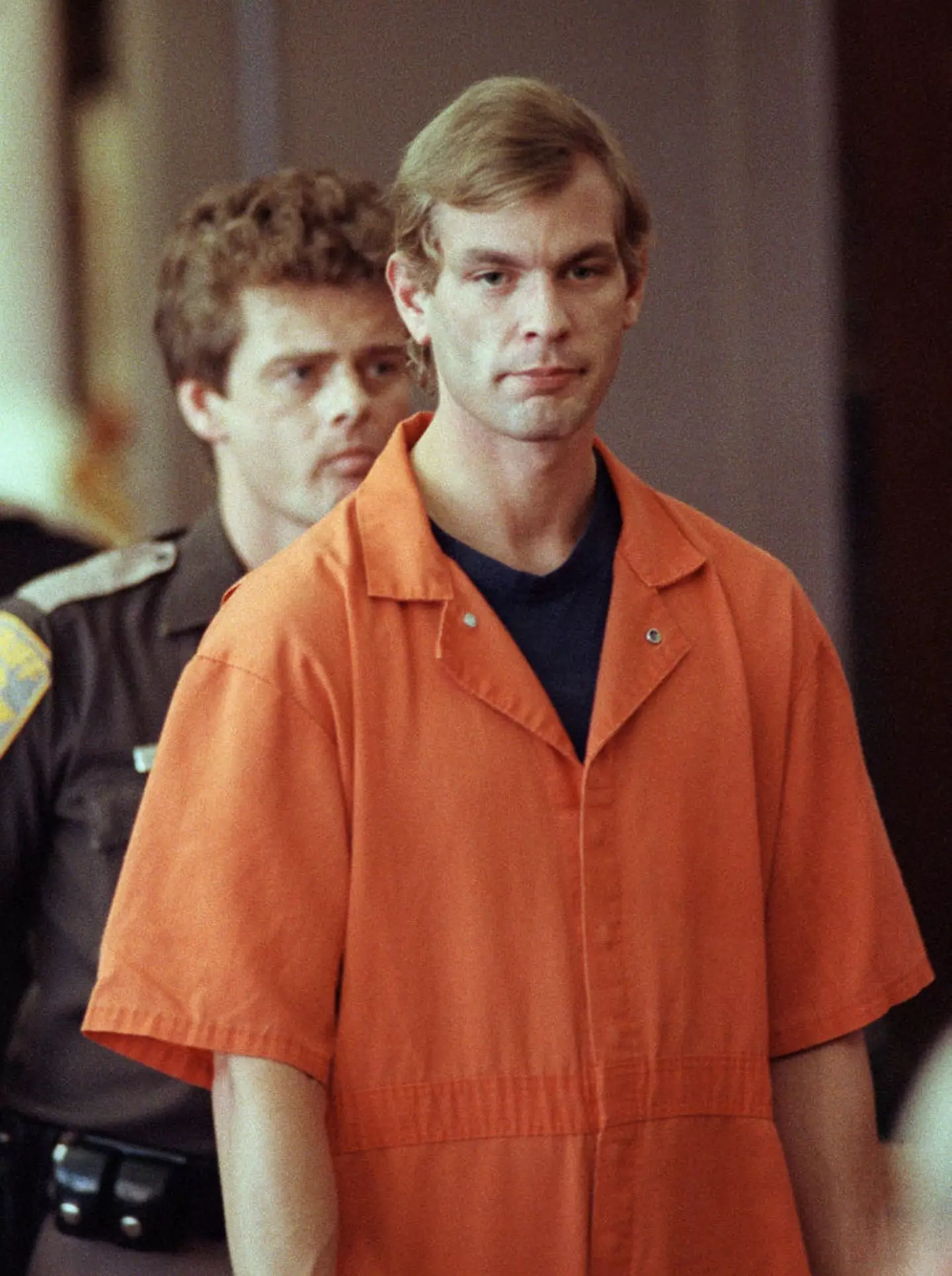

Jeffrey Dahmer murdered 17 men and boys. (EUGENE GARCIA/AFP via Getty Images)
Christopher Scarver killed Dahmer by beating him to death while the two were housed at Columbia Correctional Facility in 1994.
Speaking to The New York Post in 2015, Scarver described what Dahmer was like in prison.
“He would put them in places where people would be.” he said. “He crossed the line with some people – prisoners, prison staff. Some people who are in prison are repentant, but he was not one of them.”
He continued to say: “I saw heated interactions between [Dahmer] and other prisoners from time to time,” adding: “There was no impression.”
Scarver initially had no intention of approaching Dahmer as he didn’t want to be the target of his horrific style of humor.
However, on November 28, 1994, Scarver, Dahmer and fellow inmate Jesse Anderson were tasked to clean the gymnasium in the prison, when there were no guards present.
Scarver would go on to claim that one of the pair poked him in the back to antagonize him, however, he said he ‘couldn’t tell which had done it’ – and that’s when he took a 20-inch metal bar off a piece of exercise equipment and cornered Dahmer.


Christopher Scarver (Milwaukee County Sheriff’s Department)
Pulling out a newspaper clipping from his pocket, Scarver confronted him about his crimes.
He said: “I asked him if he did those things ’cause I was fiercely disgusted.
“He was shocked. Yes, he was… He started looking for the door pretty quick. I blocked him.”
A then-25-year-old Scarver beat 34-year-old Dahmer over the head twice with the bar and smashed his head against the wall.
According to The Mirror, before dying, Dahmer reportedly said: “I don’t care if I live or die. Go ahead and kill me.”
Scarver then went towards Anderson, who was working in a locker room.
He said: “He stopped for a second and looked around.
“He was looking to see if any officials were there. There were none. Pretty much the same thing [happened] – got his head put out.”
Scarver later received two additional life sentences for their murders, as well as his original life sentence for murdering someone from his workplace.
Featured Image Credit: EUGENE GARCIA/AFP/Curt Borgwardt/Sygma/Getty Images
Topics: True crime, Crime, News, Jeffrey Dahmer
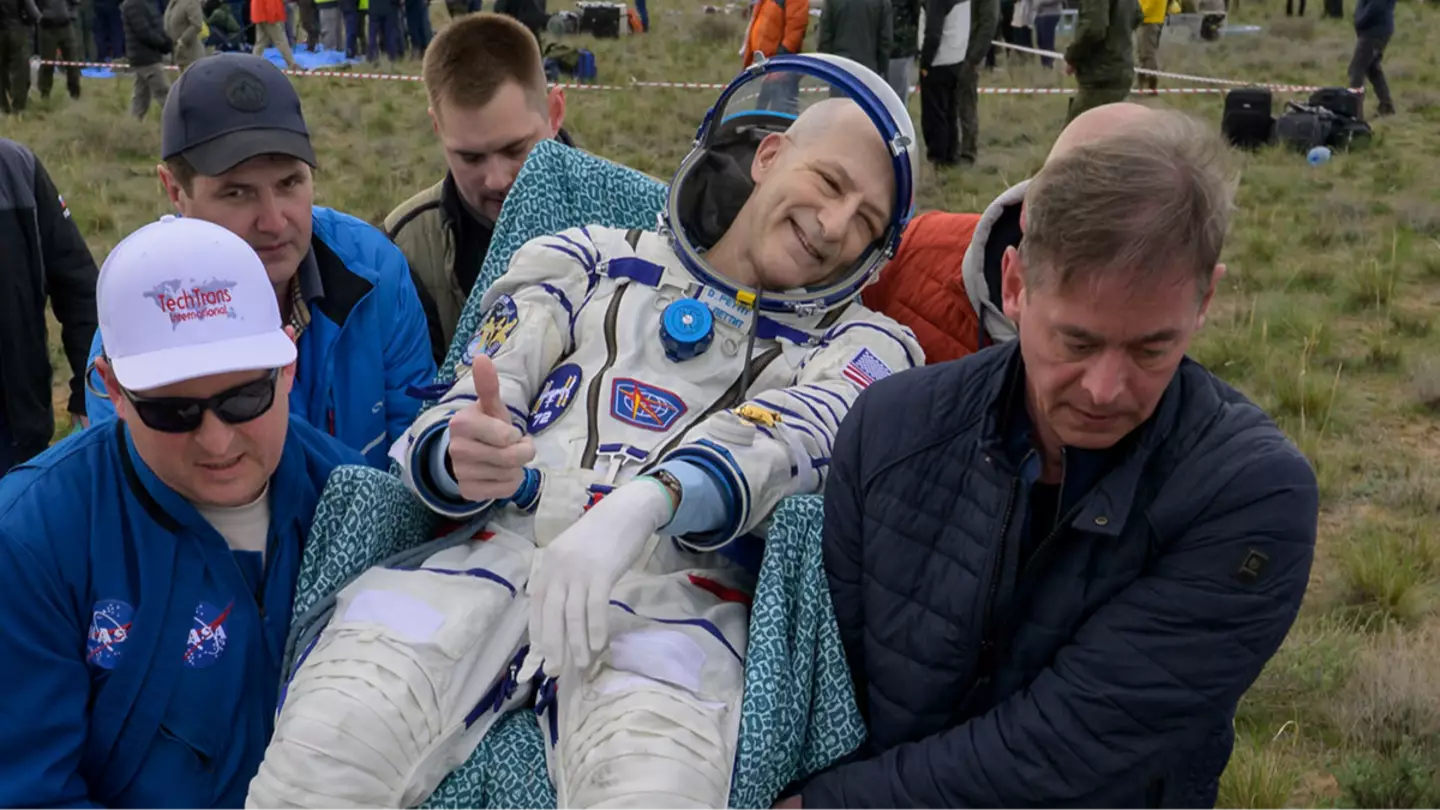

A NASA astronaut spent part of his 70th birthday hurtling towards Earth, before undergoing a series of tests on his health upon touchdown.
After spending a total of 220 days in space, a frail-looking Don Pettit – who is NASA’s oldest serving astronaut – appeared from the shuttle alongside two Russian cosmonauts at the crash site in Kazakhstan, yesterday (April 20).
Taking to Twitter to confirm the 70-year-old’s safe return to Earth, NASA wrote: “Home sweet Houston. @NASA_Astronauts Don Pettit has officially returned home from the @Space_Station after completing his fourth spaceflight, totaling 590 days in space. A picture perfect mission.”
Yes, it wasn’t his first stint in space having served on several missions in his 29-year space career, with 370 days in total orbiting Earth prior to the 220 he has just achieved.
But covering more than 93 million miles while orbiting our planet 3,520 times, it’s got to take a toll on your body – especially the way in which their spacecraft collided with the steppes of Kazakhstan.
Responding to how pale Pettit looked, one person tweeted: “I hope Don Pettit is OK. Soyuz landings can be rough (as seen here). I wonder if he hit his head on something.”
“He looked out of it,” added another.
A third typed: “The commentary indicates that Pettit was in a bad shape after extraction from the capsule.”
While a fourth wrote in part: “No images of @astro_Pettit since he was pulled from the Soyuz in a fragile state.”


NASA astronaut Don Pettit is carried to a medical tent shortly after he landed in a Soyuz MS-26 spacecraft (Bill Ingalls/NASA via Getty Images)
However, NASA tweeted shortly after to confirm that the veteran is ‘doing well’.
“According to NASA officials at the landing site, @Astro_Pettit is doing well and in the range of what is expected for him following return to Earth.
“What’s expected for him? In his own words during an April 16 pre-departure interview, ‘This is a physiological thing. It affects different people different ways. Some people can go out and eat pizza and dance. When I land, it takes me about 24 hours to feel like I’m a human being again.'”
Despite his age, Pettit is not the oldest person to have ever orbited Earth – with that title going to the late NASA astronaut John Glenn, who was 77 at the time of his 1998 mission.
Glenn sadly passed away at the age of 95 in 2016.
On Friday, Pettit posted: “The feeling of being home is directly proportional to how far you have traveled.


Don Pettit pictured in September before his mission (Bill Ingalls/NASA via Getty Images)
“When going out to dinner, you feel home when pulling into the driveway. When touring about for a Sunday drive, you feel home when entering the outskirts of your town. When driving across the United States, perhaps on one of those memorable family vacations, you get a feeling of being home when you cross your state line (be sure to stop and take a family photo).
“When flying international, you feel home the first place your airplane returns to US soil. You may be 2000 miles from home, but you say to yourself, I am home. After having been on Space Station for seven months, we will be returning on our Soyuz spacecraft landing on the steppes of Kazakhstan.
“When our capsule goes thump on those desert flats, I will be literally on the opposite side of Earth, nearly 12,000 miles from home. Yet I will be home.
“I can picture sometime in the future, a crew returning from Mars and after inserting themselves into low Earth orbit, they will look down at this blue jewel circling below and say, ‘I am Home’.”
Featured Image Credit: Getty Images/Bill Ingalls/NASA


A pilot uttered some chilling final words as he witnessed another plane crash into his aircraft.
Some 47 years ago, two planes were involved in a major crash on the Spanish island of Tenerife.
The tragic collision between KLM flight 4805 and Pan Am flight 1736 on March 27 1997 saw 583 people lose their lives.
The Tenerife airport disaster occurred after the KLM flight initiated its takeoff, believing it had been give the go-ahead to depart the Canary Island.
This ultimately resulted in the plane colliding with the Pan Am flight that was still on the runway at the time.
The tragic collision led to every passenger on board the KLM flight losing their lives, including 234 passengers and 14 crew staff.


The crash sent shockwaves across the world (Central Press/Getty Images)
Meanwhile, 60 people survived the crash on the Pan Am aircraft – though at least 330 people were believed to have died.
The total number of casualties meant the Tenerife airport disaster is still the deadliest accident in aviation history.
Poor weather conditions played a huge role in the disaster, while radio interference meant KLM crew did not hear a message stating the Pan Am flight was still on the runway.
So as it was gearing to takeoff, the KLM flight was rapidly approaching the taxiing Pam Am plane.
Bob Bragg, who was the first officer on that flight, recalled the terrifying incident in an interview with CBS News.
He said: “As soon as I saw the man moving and coming at us, I started saying, ‘Get off!’ As we were turning to the left, I looked back out of my side window, and that’s when he had lifted off the ground and become airborne, right as close to us as I could see him.”
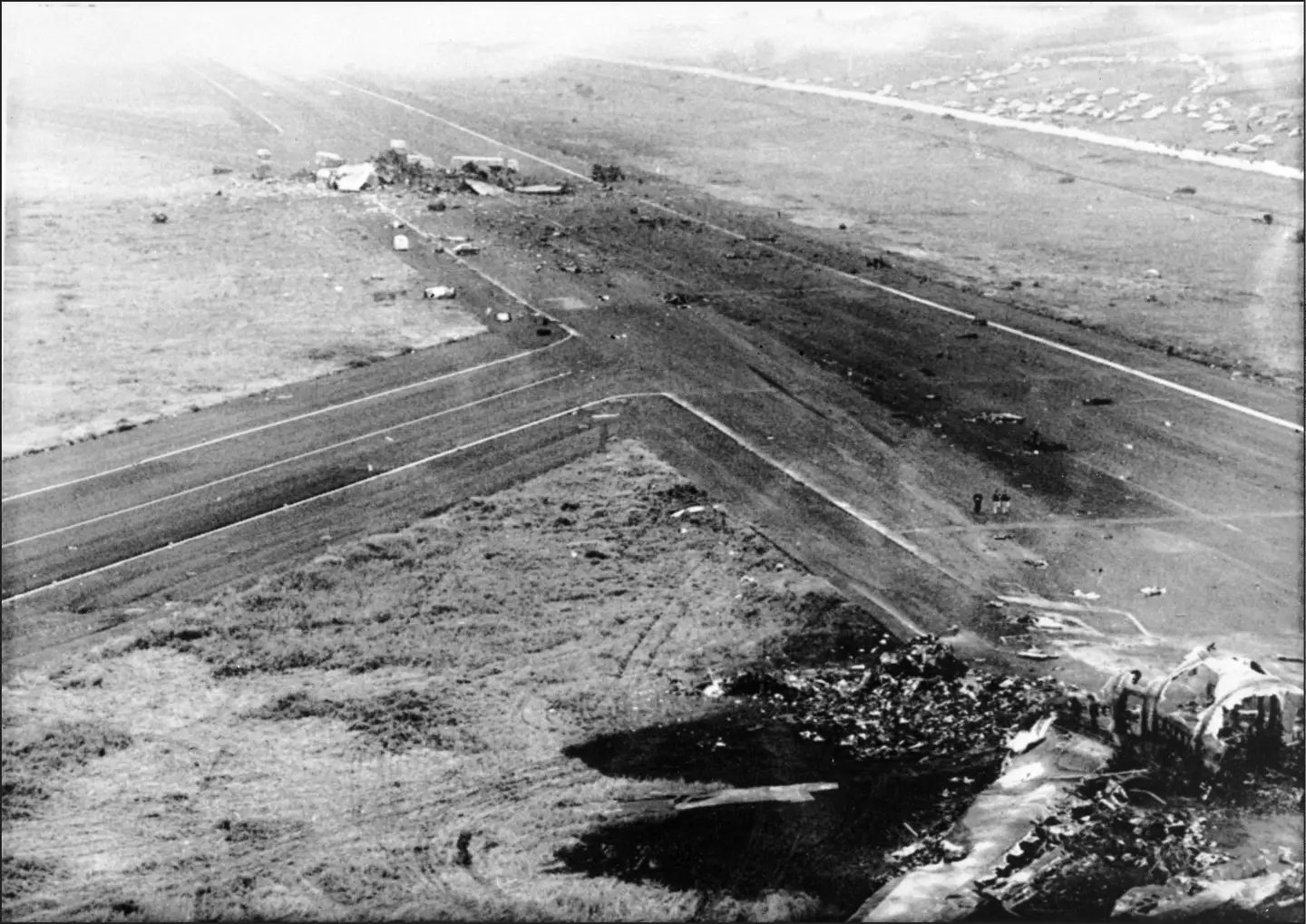

The plane crash is still the deadliest aviation incident (CORR/ANP/AFP via Getty Images)
A cockpit voice recording managed to record the chilling words of Pam Am pilot Victor Grubbs.
He shouted: “There he is! Look at him! Goddamn, that son of a b**** is coming!”
The pilot remarkably survived the crash. He died 18 years later in March 1995 at the age of 74.
A subsequent investigation blamed KLM captain Jacob Louis Veldhuyzen van Zanten thinking he was cleared for takeoff in Tenerife for the incident.
KLM then accepted responsibility for the crash and the airline agreed to financially compensate the relatives of those that had lost their lives in settlements totalling $110 million.
van Zanten was a highly experienced pilot and even featured in KLM commercials back then.
